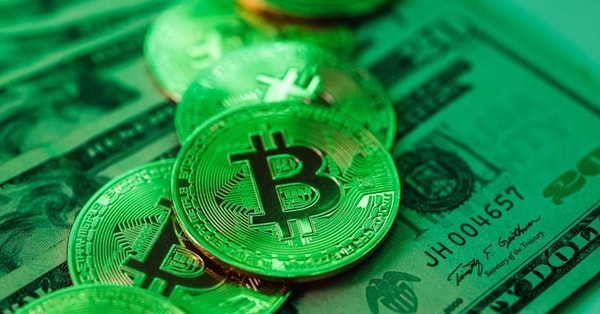Federal Reserve Adjustments Needed Amidst Stablecoin Surge
Federal Reserve Governor Michelle W. Bowman warns that the rise of stablecoins, expected to reach $3 trillion, will necessitate adjustments in U.S. monetary policy.
In a recent statement, Federal Reserve Governor Michelle W. Bowman highlighted the critical role that stablecoins are poised to play in the U.S. financial system. She emphasized that the growing demand for dollar-tied assets, particularly in light of the expected surge in stablecoin usage, will necessitate adjustments in monetary policy. With projections suggesting that the value of stablecoins could reach a staggering $3 trillion, the implications for the Federal Reserve's strategies cannot be underestimated.
Stablecoins are a form of cryptocurrency designed to maintain a stable value by pegging their worth to traditional currencies, commodities, or other assets. The most notable example is Tether (USDT), which is pegged to the U.S. dollar. Other examples include USD Coin (USDC) and Binance USD (BUSD). The appeal of stablecoins lies in their ability to combine the benefits of digital currencies—such as ease of transfer and digital ownership—with the stability of fiat currencies.
The market for stablecoins has exploded in recent years, driven by increased adoption among consumers and businesses, as well as the growing interest from institutional investors. Unlike other cryptocurrencies, which can be highly volatile, stablecoins offer the promise of stability, making them an attractive option for transactions and savings.

As the stablecoin market expands, so does the demand for dollar-tied assets. Stablecoin issuers typically back their tokens with reserves of fiat currency or other assets, often holding significant amounts of U.S. Treasuries to ensure liquidity and stability. This creates a direct link between the growth of stablecoins and the demand for U.S. government debt.
The implications of this trend are manifold. First, an influx of capital into Treasuries could influence interest rates and liquidity in the broader economy. If stablecoins continue to grow, the Federal Reserve may find itself needing to adjust its monetary policy to accommodate this new demand. This could mean recalibrating interest rates or altering the way it manages the money supply.
The Federal Reserve's primary role is to manage monetary policy to promote maximum employment, stable prices, and moderate long-term interest rates. However, the introduction and proliferation of stablecoins present both opportunities and challenges for the Fed. On one hand, stablecoins could enhance the efficiency of payment systems, reducing transaction times and costs. On the other hand, their rapid growth could pose risks to financial stability if not properly regulated.
Governor Bowman’s remarks underscore the Fed's recognition of these challenges. The central bank is tasked with ensuring the safety and soundness of the financial system while fostering innovation. As stablecoins gain traction, the Fed may need to establish clearer regulatory guidelines to mitigate potential risks associated with these digital assets.

The rise of stablecoins raises several regulatory concerns. One major issue is the potential for a run on stablecoin reserves, similar to a bank run, if users lose confidence in the issuer's ability to maintain the peg. This could create liquidity crises and destabilize the financial system. Furthermore, the lack of uniform regulations across different stablecoin issuers can lead to inconsistencies and vulnerabilities within the market.
Additionally, there are concerns regarding consumer protection, anti-money laundering (AML), and combating the financing of terrorism (CFT). As stablecoins become more integrated into the financial system, the Fed and other regulatory bodies will need to ensure that appropriate safeguards are in place to protect users and maintain the integrity of the financial system.
The implications of the stablecoin boom extend beyond the U.S. economy. As other countries explore their own digital currencies, the competitive landscape for global finance is shifting. Central banks worldwide are examining the potential benefits and risks of stablecoins and digital currencies, prompting discussions about the future of monetary policy on an international scale.
The dominance of the U.S. dollar as the world's primary reserve currency could be challenged as stablecoins gain popularity. If stablecoins are widely adopted, they may facilitate cross-border transactions and reduce reliance on traditional banking systems. This shift could impact the Federal Reserve's influence over global monetary policy, necessitating a reevaluation of its strategies.

As the stablecoin market accelerates towards an anticipated valuation of $3 trillion, the Federal Reserve faces a critical juncture. Policymakers must adapt to the changing landscape of digital finance while safeguarding economic stability. Balancing innovation with regulation will be key in navigating the challenges posed by stablecoins. The coming years will likely see significant developments in both the regulatory framework and the operational strategies of the Federal Reserve as it responds to this burgeoning sector.
In summary, the Fed's proactive stance, as articulated by Governor Bowman, is essential not only for addressing the immediate implications of stablecoins but also for shaping the future of monetary policy in an increasingly digital economy.
Tags:
Related Posts
Unlock Steady Bitcoin Growth with Dollar-Cost Averaging
Discover how dollar-cost averaging can help you invest in Bitcoin wisely and enjoy steady growth, even when the market gets rocky.
Your Easy Guide to Earning Passive Income with Cardano
Curious about earning while you sleep? Discover how to stake Cardano for passive income in this step-by-step guide. Let's unlock your crypto potential.
Blockchain Unlocked: Your Easy Guide to Understanding It
Confused by blockchain? You're not alone! Let’s simplify this revolutionary tech and show you how it works—no jargon, just clarity.
Slash Your Ethereum Gas Fees: A Practical Guide for 2023
Tired of high gas fees eating into your Ethereum trades? This guide shares hands-on tips to cut costs and maximize your crypto experience!
Secure Your Crypto: Top Hardware Wallets for 2023
Want to keep your cryptocurrency safe? Check out my guide to the best hardware wallets of 2023 and learn how to protect your digital assets effortlessly!
5 Safe Crypto Trading Strategies for Cautious Investors
Feeling lost in the crypto chaos? Discover five conservative strategies that can help you navigate the market safely and grow your investments.